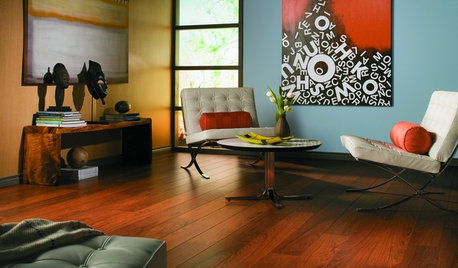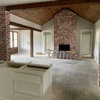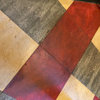Question regarding moisture level in wood
LuckyJoe
9 years ago
Related Stories

REMODELING GUIDES9 Hard Questions to Ask When Shopping for Stone
Learn all about stone sizes, cracks, color issues and more so problems don't chip away at your design happiness later
Full Story
FEEL-GOOD HOMEThe Question That Can Make You Love Your Home More
Change your relationship with your house for the better by focusing on the answer to something designers often ask
Full Story
KITCHEN DESIGN9 Questions to Ask When Planning a Kitchen Pantry
Avoid blunders and get the storage space and layout you need by asking these questions before you begin
Full Story
GREEN BUILDINGConsidering Concrete Floors? 3 Green-Minded Questions to Ask
Learn what’s in your concrete and about sustainability to make a healthy choice for your home and the earth
Full Story
LIGHTING5 Questions to Ask for the Best Room Lighting
Get your overhead, task and accent lighting right for decorative beauty, less eyestrain and a focus exactly where you want
Full Story
EXTERIORSCurb Appeal Feeling a Little Off? Some Questions to Consider
Color, scale, proportion, trim ... 14 things to think about if your exterior is bugging you
Full Story
MOVINGHiring a Home Inspector? Ask These 10 Questions
How to make sure the pro who performs your home inspection is properly qualified and insured, so you can protect your big investment
Full Story
BASEMENTSBasement Becomes a Family-Friendly Lower Level
A renovation creates room for movie nights, overnight guests, crafts, Ping-Pong and more
Full Story
REMODELING GUIDESLaminate Floors: Get the Look of Wood (and More) for Less
See what goes into laminate flooring and why you just might want to choose it
Full Story
GARDENING AND LANDSCAPINGChoosing a Deck: Plastic or Wood?
Get the pros and cons of wood, plastic, composite and more decking materials, plus a basic price comparison
Full StoryMore Discussions








gregmills_gw
LuckyJoeOriginal Author
Related Professionals
Alpine Flooring Contractors · Englewood Flooring Contractors · Inver Grove Heights Flooring Contractors · Iowa City Flooring Contractors · Johnson City Flooring Contractors · Lutz Flooring Contractors · Rogers Flooring Contractors · Tewksbury Flooring Contractors · Turlock Tile and Stone Contractors · Lyndon Carpet Dealers · Three Lakes General Contractors · Arkansas City General Contractors · Elyria General Contractors · Highland City General Contractors · Kentwood General Contractorsgregmills_gw
LuckyJoeOriginal Author
User
gregmills_gw
LuckyJoeOriginal Author
gregmills_gw
User
Jon 6a SE MA
Swentastic Swenson